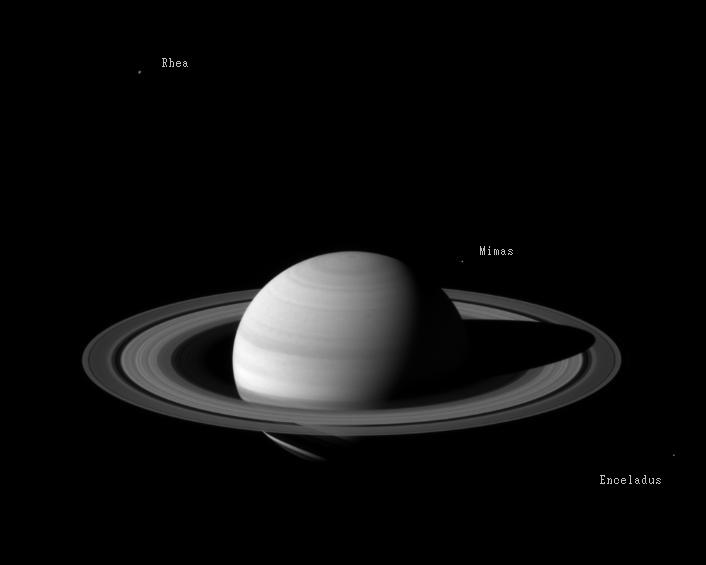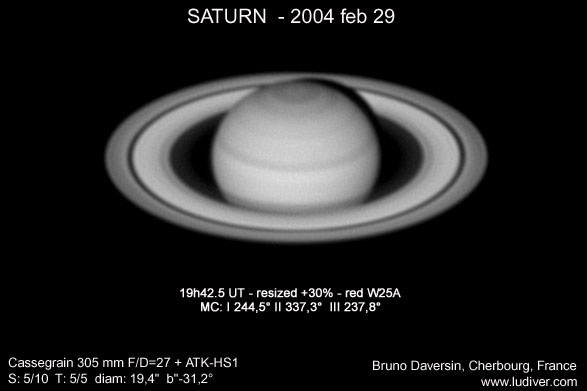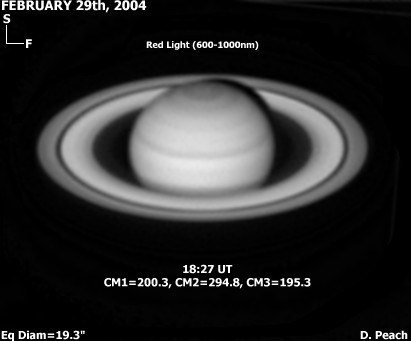|
The Cassini-Huygens mission
|
South up

Original image tiff 176kB 1000X800
Original Caption Released with Image:
Bands and spots in Saturn's atmosphere, including a dark band south of the equator with a scalloped border, are visible in this image from the Cassini-Huygens spacecraft.
The narrow angle camera took the image in blue light on Feb. 29, 2004. The distance to Saturn was 59.9 million kilometers (37.2 million miles). The image scale is 359 kilometers (223 miles) per pixel.
Three of Saturn's moons are seen in the image: Enceladus (499 kilometers, or 310 miles across) at left; Mimas (398 kilometers, or 247 miles across) left of Saturn's south pole; and Rhea (1,528 kilometers, or 949 miles across) at lower right. The imaging team enhanced the brightness of the moons to aid visibility.
The BL1 broadband spectral filter (centered at 451 nanometers) allows Cassini to "see" light in a part of the spectrum visible as the color blue to human eyes. Scientist can combine images made with this filter with those taken with red and green filters to create full-color composites.
Scientists can also assess cloud heights by combining images from the blue filter with images taken in other spectral regions. For example, the bright clouds that form the equatorial zone are the highest in altitude and have pressures at their tops of about one quarter of Earth's atmospheric pressure at sea level. The cloud tops at middle latitudes are lower in altitude and have higher pressures of about half that found at sea level. Analysis of Saturn images like this one will be extremely useful to researchers assessing cloud altitudes during the Cassini-Huygens mission.
The Cassini-Huygens mission is a cooperative project of NASA, the European Space Agency and the Italian Space Agency. The Jet Propulsion Laboratory, a division of the California Institute of Technology in Pasadena, manages the Cassini mission for NASA's Office of Space Science, Washington, D.C. The imaging team is based at the Space Science Institute, Boulder, Colo.
Image Credit:
NASA/JPL/Space Science Institute
Image Note:
SatC43d060B-m4e2
[NASA/JPL/Space Science Institute]
 ALPO-Japan Latest ALPO-Japan Latest

 Saturn Section Saturn Section
|




 ALPO-Japan Latest
ALPO-Japan Latest

 Saturn Section
Saturn Section